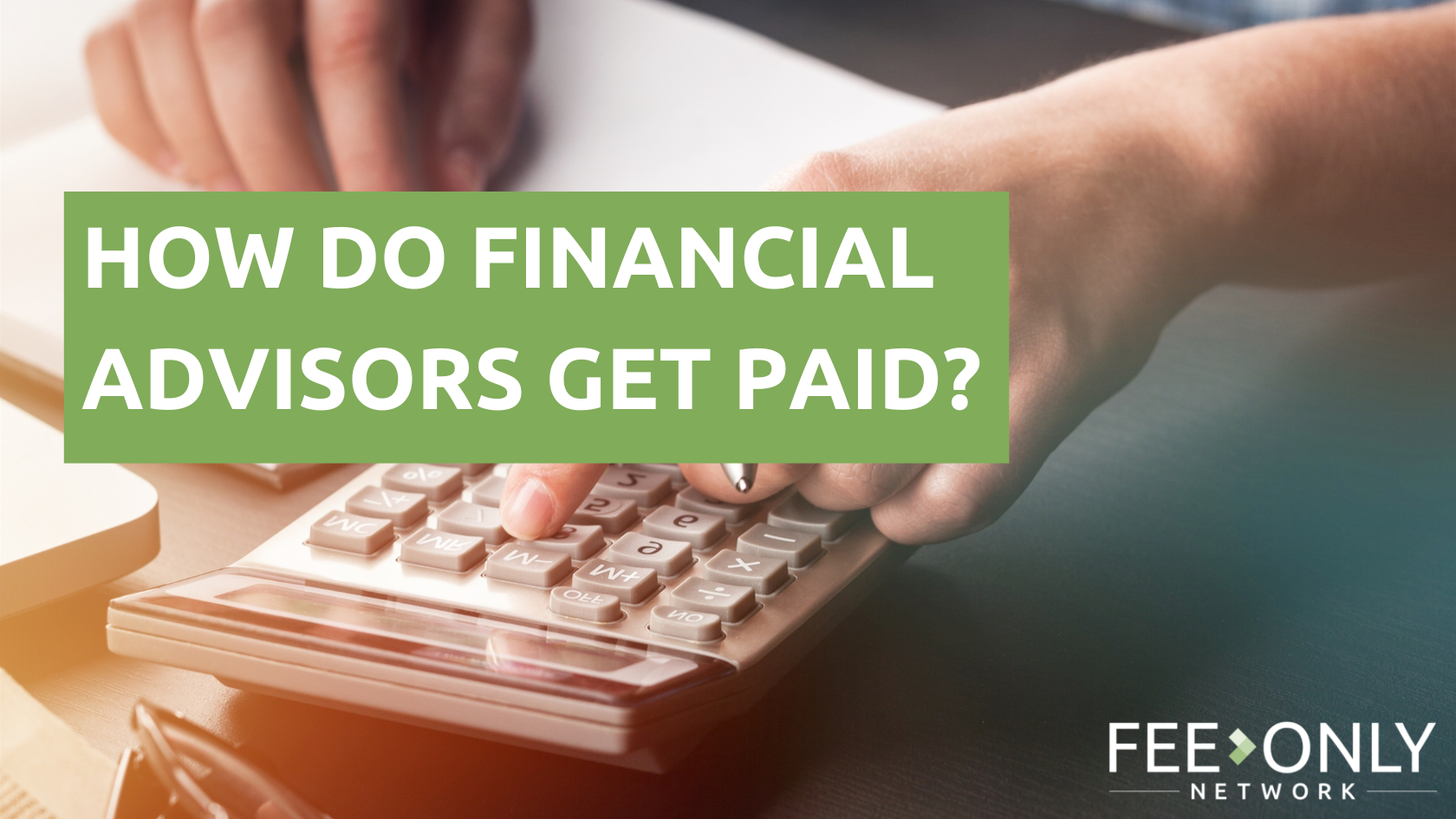
Updated: March 22, 2024

It’s important to know how your financial advisor is compensated. Some make their money only from being paid by their client. Some are compensated through a combination of client fees and commission. And some make their money based solely selling financial products for commission. The method for earning becomes relevant if you’re concerned about conflicts of interest, and working with an advisor who puts your interests ahead of their own. In this article, we’ll review the various advisor pay structures, and how they impact you.
There are several types of pay structures that financial advice firms may choose to use for their business:
These pay structures can dramatically impact the type of service you receive from your financial advisor. Let’s dig into each type of fee structure, and how you can spot them in practice.
Fee-only financial advisors operate with structured fees that are only paid by their clients. They don’t receive commission from the sale of insurance or other financial products.
Fee-only advisors base their fees to the client on the following:
Although there are many different types of “fee-only” ways to get paid, the key difference is that advisors who are fee-only work for their clients exclusively. Because they don’t receive commissions from the sale of financial products, their advice is motivated only by their clients’ needs.
Fee-based financial advisors are paid using a combination of client fees and commission from product sales. Most commonly, these advisors charge their clients a fee, similar to fee-only advisors, but also sell insurance products as part of their financial plans. It’s through these insurance products that they earn commission.
It’s important to remember that although fee-only and fee-based advisors may sound similar, they aren’t the same. Because they earn a commission for the sale of financial products, a conflict of interest is present, and it could influence the financial advice they give to clients.
Commission advisors only earn income from the commission they make on the sale of financial products. These financial advisors typically work directly for an insurance company, or a larger financial firm that’s connected to an insurance company.
Any time commissions are earned from the sale of financial products, an advisor’s advice can be influenced. To be fee-only means that an advisor is free from these conflicts of interest and can truly put the needs of their clients first. Most fee-only advisors operate under the fiduciary standard – a legal obligation to put their clients’ interests above their own and to operate ethically at all times.
Financial advisors who use an alternate fee structure may think they’re able to operate under this same fiduciary standard, but the conflicts of interest they face by accepting commission pose a problem. Even if they’re exceptional advisors with the best of intentions, the opportunity for a misstep exists.
Seeking out a fee only financial advisor can help to ensure that the financial advice you receive is without conflicts of interest. You’ll be working with a professional who you know works exclusively for you. In other words, your “wins” are their “wins” – they want you to succeed, because the fee you pay is their sole motivator.
Be wary of any financial advisor who isn’t willing to discuss how they’re paid, and make sure to do your due diligence when researching potential advisors to hire. Advisors know how they’re compensated, and should be able to have a candid conversation with you about it, as well as any concerns you may have.

Allan Slider is the Founder of FeeOnlyNetwork.com, a one-of-a-kind digital platform that elevates the visibility of fee-only financial advisors, individually and collectively. Fee-Only advisors are ONLY compensated by the client and NEVER make commission by selling financial products, or receiving kickbacks from brokerage firms. Allan is a consumer & investor advocate and a 20+ year veteran of online marketing for financial advisors.

If you're seeing this message, it's because the web browser you're using to access our site is much older and no longer supported. Due to privacy and safety concerns, we don't allow older browsers to access our site. In order to access WhyFiduciary.com, please use a newer browser, like Internet Explorer 10 or above, Google Chrome, or Mozilla Firefox.
Download a newer browser